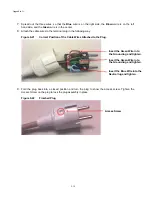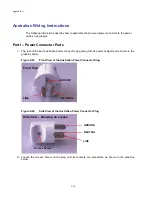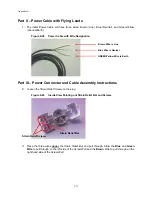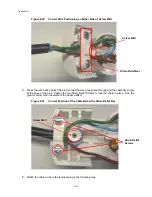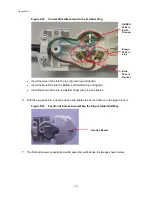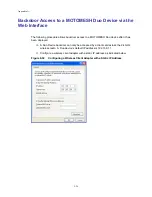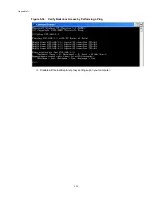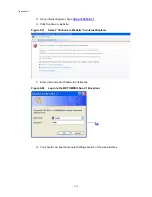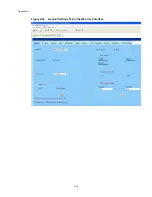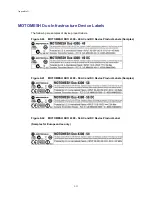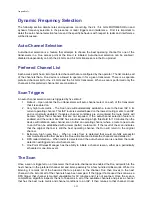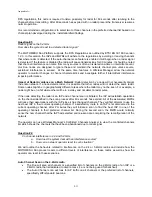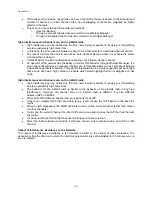
Appendix A:
DFS regulations, this node is required to listen passively for radar for 60 seconds after retuning to the
channel before transmitting. After 60 seconds has expired with no radar present the transceiver resumes
normal operation.
Our recommended configuration is to select two to three channels in the preferred channel list based on a
channel plan developed during the installation/field findings.
Question #1:
Radar signal on the 5.4 GHz
How does the system react to a detected radar signal?
The MOTOMESH Duo Platform supports the DFS Regulations as outlined by ETSI EN 301 893 version
1.2.3. In this version the IAPs and MWRs will adhere to the regulations by avoiding or leaving channels
that where radar is detected. If the auto-channel scan feature is enabled it will begin when a radar signal
is detected. If the feature is disabled the radio will cease transmissions for 30 minutes. It should be noted
that channel interference can come from many sources is often an isolated one-time or intermittent event.
Our Duo nodes are designed to ignore these and maintain the network channel plan unless severe,
sustained interference is sensed. At the same time, features in Wireless Manager allow the network
operator to monitor changes in channel characteristics and investigate further if intermittent interference
impacts performance.
Impact of Radar Avoidance on a Mesh Network
: Radar detection by a node will not necessarily disrupt
the entire network. If a node detects radar, it is possible that other nodes will not detect the same radar.
Some nodes might be in geographically different areas where the radar may not be seen. For example, a
node might be on a hill where other will be in a valley and not detect a radar pulse.
If the node detecting the radar is an IAP and a channel scan is initiated, the IAP will establish operations
on the channel identified in the scan process after 60 seconds has expired. All of the associated MWRs
will loose their associations with the IAP since it has changed channels. They will first attempt to use the
next best IAP in their current operating channel. If a satisfactory route to an IAP is not discovered in the
current operating channel, after 2 minutes they will initiate a scan to find the best IAP in one of the
operating channels in their preferred channel list. During the second scan, the MWR would normally
sense the new channel that the IAP had selected and re-associate, completing the reconfiguration of the
network.
The operator can use Wireless Manager's Conflicted Channels Analyzer to view the conflicted channels
list which shows the channels that have been abandoned due to radar signal
Question #2:
Co channel interference in 2.4 and 5.4 GHz.
a. How does the system deal with an interference source?
b. How can a network operator react to such situation?
We will outline the behaviors related to interference on the 2.4 or 5.4GHz radios and include how the
MOTOMESH Duo product reacts to different levels of interference on these radios as well as how the
operator can react to these scenarios.
Auto Channel Scan on the 2.4GHz radio
:
•
The Duo will scan all channels or a specified list of channels on the 2.4GHz radio of an IAP or a
2.4GHz radio that is dedicated to client access (i.e. is not being used for backhaul)
•
The Auto Channel scan will look for AP traffic on all channels or the preferred list of channels,
specifically WiFi standard beacons.
9-33
Содержание 2.1
Страница 2: ...This page intentionally left blank ii ...
Страница 4: ...This page intentionally left blank iv ...
Страница 10: ...This page intentionally left blank x ...
Страница 12: ...This page intentionally left blank xii ...
Страница 14: ...This page intentionally left blank xiv ...
Страница 59: ...Chapter 3 MOTOMESH Duo Hardware This page intentionally left blank 3 12 ...
Страница 86: ...Chapter 5 Customer Information This page intentionally left blank 5 7 ...
Страница 123: ......
Страница 131: ...Appendix A Figure 9 39 General Settings Tab in the Web User Interface 9 30 ...

